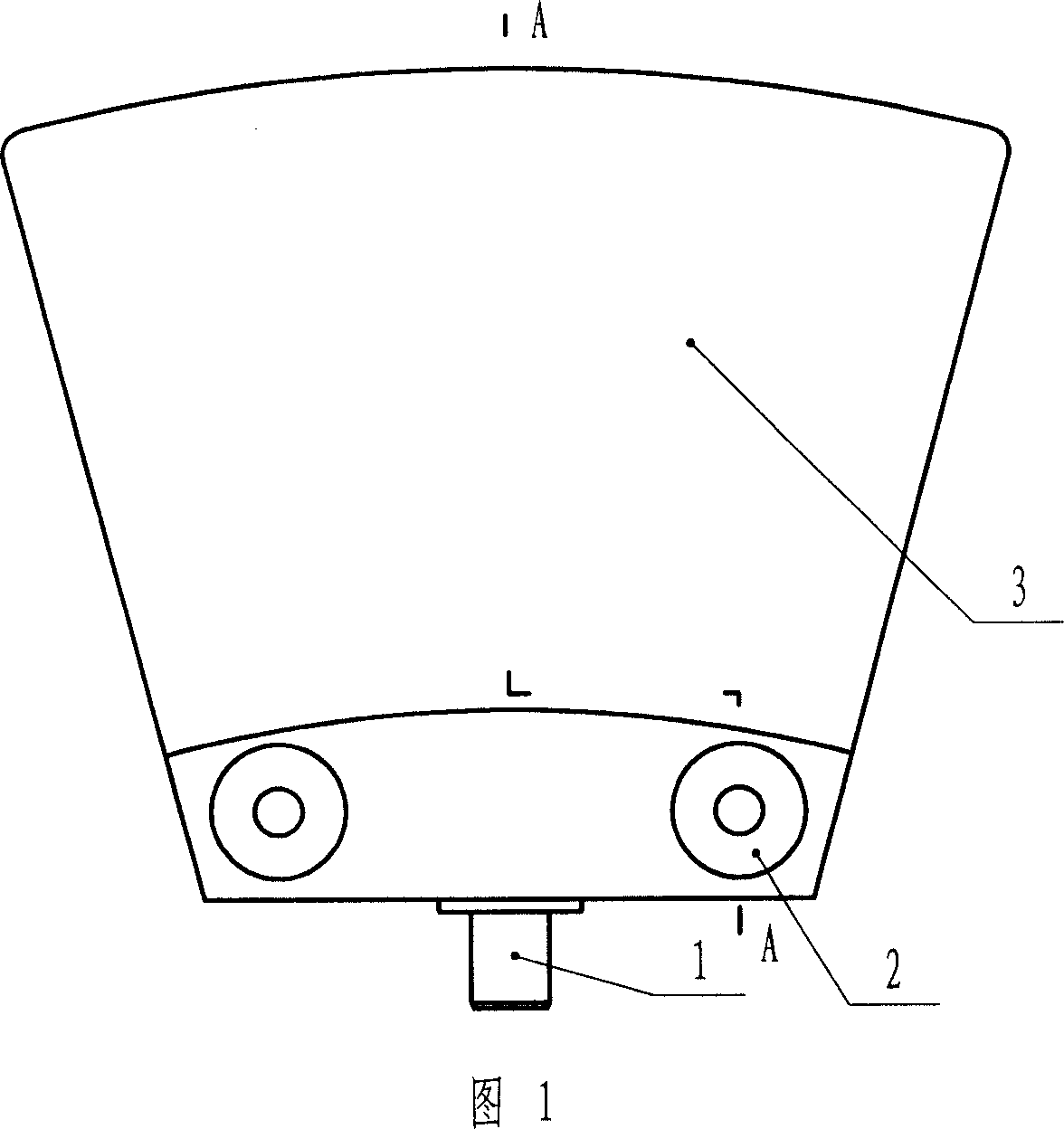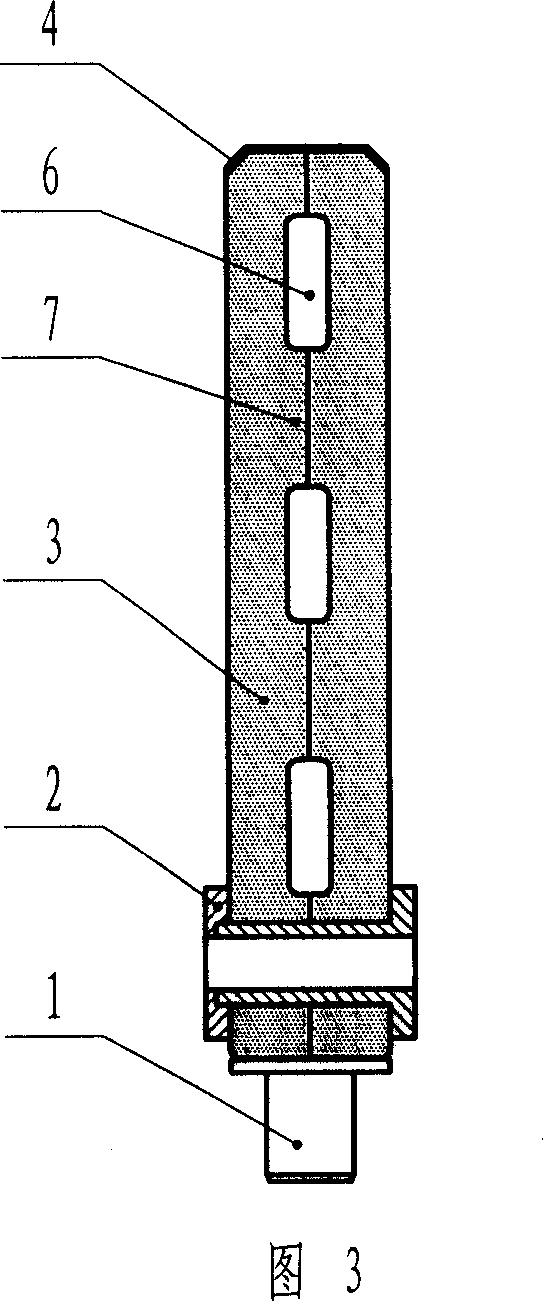Hollow extracting micro-hole filtering element
A microporous filtration and hollow technology, applied in the direction of mobile filter element filter, filtration separation, separation method, etc., can solve the problems of low effective opening porosity, increased failure rate, low strength, etc., and achieve continuous operation time increase and decrease The effect of high failure rate and impact resistance
- Summary
- Abstract
- Description
- Claims
- Application Information
AI Technical Summary
Problems solved by technology
Method used
Image
Examples
Embodiment 1
[0018] Embodiment 1: Referring to Figs. 1 and 2, the hollow suction microporous filter element of the present invention adopts a commercially available average pore diameter of about 0.5 μm and a polyethylene flat plate with a thickness of 12 mm, which is cut into a fan-shaped filter wall 3 as shown in Fig. 1, and is arranged between the two plates A number of supports 5 are bonded to form two filter plates separated by a 6 mm spaced hollow flow channel 6 as an overall structure. The non-working peripheral surface is sealed with a sealing tape 4 to seal the micropores. The hollow flow channel is fixed with a drain nozzle 1, and the base of the filter element is processed with a through hole. The hole connects the positioning seat 2.
Embodiment 2
[0019] Embodiment 2: Referring to Fig. 3, as in Embodiment 1, one side of the commercially available microporous plastic sheet is made into a flat filter surface, and the other side has a plurality of bosses 7 structures, which are bonded by two bands of bosses to form a flat filter surface. A microporous filter element with a hollow structure.
PUM
| Property | Measurement | Unit |
|---|---|---|
| pore size | aaaaa | aaaaa |
| pore size | aaaaa | aaaaa |
| thickness | aaaaa | aaaaa |
Abstract
Description
Claims
Application Information
 Login to View More
Login to View More - R&D
- Intellectual Property
- Life Sciences
- Materials
- Tech Scout
- Unparalleled Data Quality
- Higher Quality Content
- 60% Fewer Hallucinations
Browse by: Latest US Patents, China's latest patents, Technical Efficacy Thesaurus, Application Domain, Technology Topic, Popular Technical Reports.
© 2025 PatSnap. All rights reserved.Legal|Privacy policy|Modern Slavery Act Transparency Statement|Sitemap|About US| Contact US: help@patsnap.com



